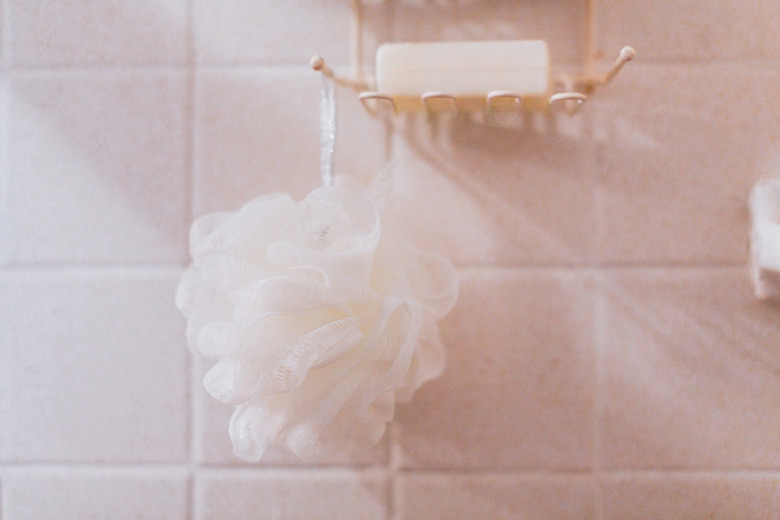What Is The Orange Stuff On The Wall Of A Bathroom Shower?
We may receive a commission on purchases made from links.
Because showers tend to be warm and damp environments, they're particularly prone to dirt and different types of buildup. If you've noticed orange-toned residue in your bathroom shower, there are likely two main culprits. It could be a type of airborne bacteria that thrives in the moist conditions of your shower.
Alternatively, the orange buildup could be because of iron deposits in hard water. Both of these can be treated at home, and through taking some careful steps, you can also prevent orange buildup in your shower from happening again in the future.
Tip
The orange stuff on your shower wall is probably caused by bacterial growth or hard water deposits.
Orange Buildup From Hard Water
Orange Buildup From Hard Water
Hard water refers to any tap water that's high in mineral deposits. If you're struggling with orange markings in your shower, it's likely your hard water suffers from an excess of iron. Iron traces will remain in your shower after the water dries, and as they come into contact with oxygen, they can start to rust. This orange color can stain shower walls and tubs, so it's best to treat it as soon as possible.
You can usually remove the iron stains by using a combination of 1/2 cup of white vinegar, 1/2 cup of lemon juice and 1 cup of water applied with a spray bottle. This should be left to sit for a while and then scrubbed with a soft-bristle scrub brush. For really tough stains, you can go in with a paste of vinegar and baking soda. Apply this to the stains, allow it to dry and then rinse off.
Orange Buildup From Bacteria
Orange Buildup From Bacteria
If the orange growth looks more like mold than a rusty stain, it's likely your problem comes from Serratia marcescens, airborne bacteria that typically enter through a window or vent and thrive in the dampness of your shower. These bacteria also feed on soap scum, so a dirty shower can be a perfect place for a colony.
Although not typically dangerous in terms of skin contact, it can cause issues for people who have weakened immune systems, particularly in the urinary tract and respiratory system. This orange bacterial growth can also cause staining in your shower stall if left untreated.
When treating orange bacterial buildup, you want to limit your exposure to the bacteria, so make sure you wear gloves, goggles and a respirator mask. Create a mixture of 1/4 cup of baking soda with 1 teaspoon of dish soap and apply it to the visible orange buildup using a soft-bristle scrub brush. Allow this to sit for several minutes before rinsing clean.
Keeping Showers Buildup Free
Keeping Showers Buildup Free
Keeping your shower clean and dry between uses can be key to preventing both types of orange buildup on your shower walls. You should be cleaning your shower at least once a week with a mixture of equal parts dish soap and white vinegar. This can be sprayed all over your shower, left for 10 minutes and then rinsed free. Pay special attention to hard-to-reach areas where soap scum and water can collect.
It's also important to keep your shower dry to prevent both hard water deposits and Serratia marcescens from being able to thrive. After every use, wipe down your shower with a towel or squeegee. Clean and dry showers are less prone to all types of unsightly buildup.
